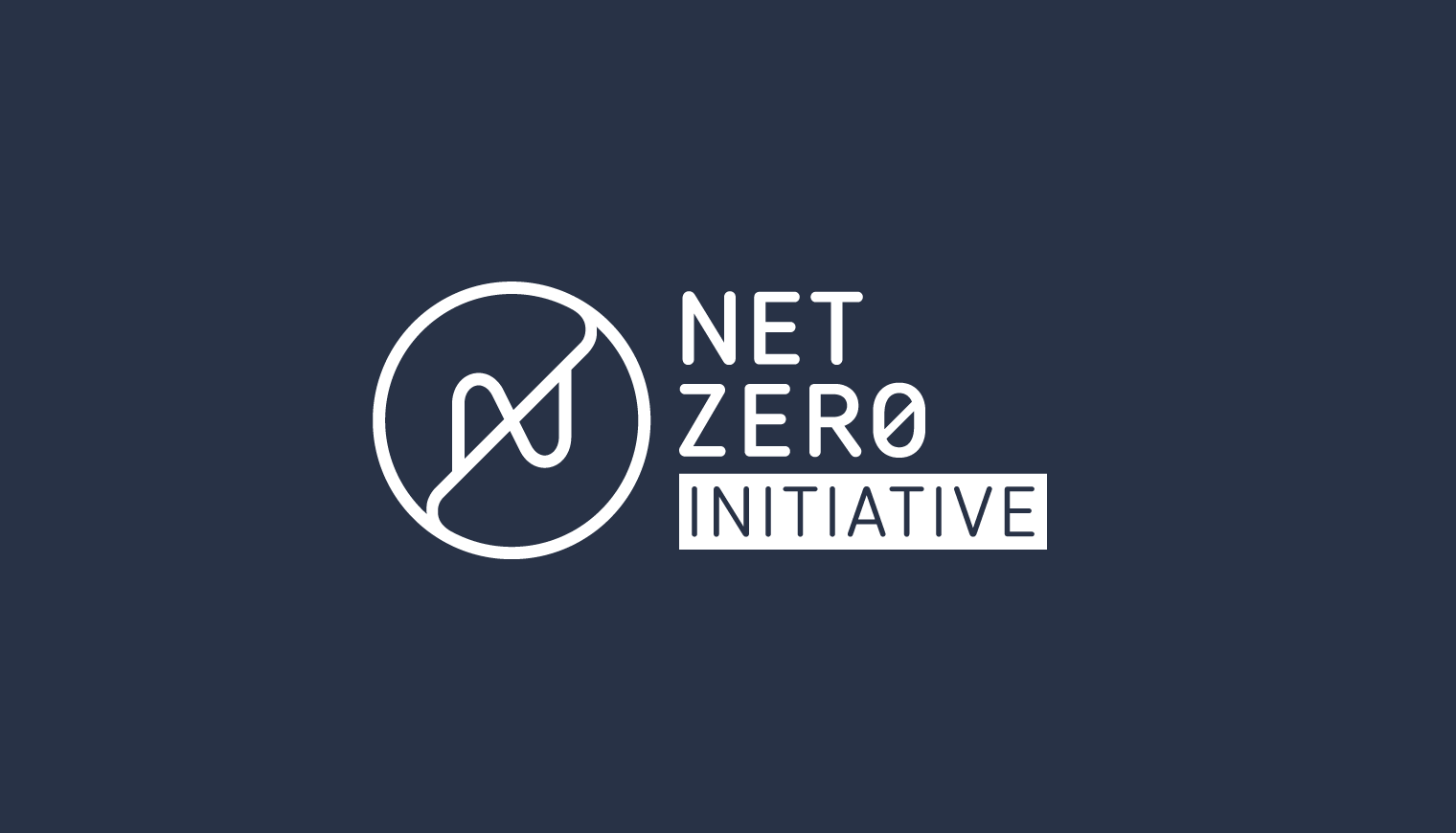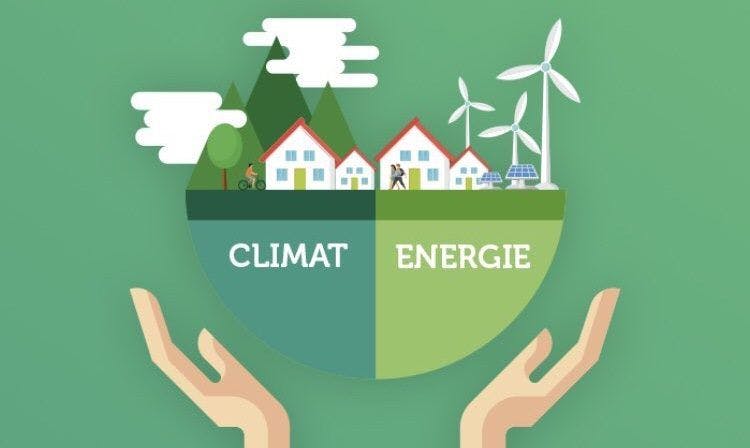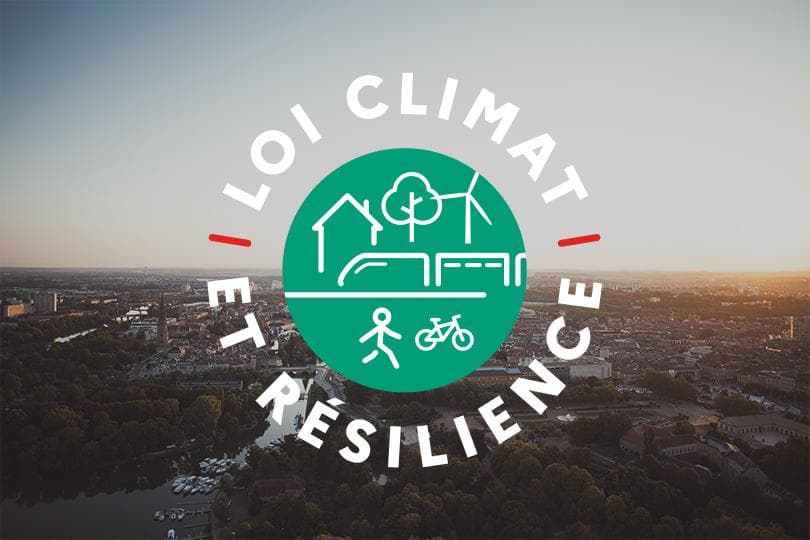Réponse de Carbone 4 à la consultation du GHG Protocol
Le GHG Protocol a lancé une consultation visant à recueillir les retours d’expériences, idées et suggestions des utilisateurs de ses différents standards de comptabilité carbone (Scope 2, Scope 3, Corporate Standards, Market-based accounting), en vue de leur mise à jour.
Convaincus que le GHG Protocol est une pièce essentielle du dispositif de décarbonation du secteur privé, et qu’il bénéficierait d’évoluer en profondeur sur plusieurs points fondamentaux, Carbone 4 a souhaité partager publiquement ses réponses à la consultation afin de nourrir le débat et de faciliter la réponse d’autres structures à ce questionnaire.
Les réponses ont été élaborées en pleine cohérence avec le référentiel Net Zero Initiative (NZI).
Scope 2 Guidance
11. Does your organization use the Greenhouse Gas Protocol Scope 2 Guidance to develop and report its greenhouse gas inventory?
Not applicable.
12. How satisfied are you with the current GHG Protocol Scope 2 Guidance?
Somewhat satisfied.
13. Do you think there is a need to update the GHG Protocol Scope 2 Guidance?
Major update (major changes or revisions needed).
14. Please explain your selection. You may enter brief comments here or submit a more detailed proposal using the proposal template.
We propose making location-based accounting mandatory and market-based accounting optional.
Location-based accounting remains the best way to monitor a company’s dependence on energy. As an indicator that is not sensitive to the use of market effects, it incentivizes companies to address the most important levers regarding their energy transition: energy efficiency (consume less) and sufficiency (do less).
The idea of Market-based accounting comes from an interesting rationale (see “Scope 2 Guidance Aggregational Theory of Change”) but does not seem to be able to deliver the expected mitigation outcomes in society for now (see this paper from Nature Climate Change).
Therefore, it appears dangerous to enable a company to net its Scope 2 emissions based on the sole purchase of RECs.
We believe that the Scope 2 market-based method could be replaced by a quantification of the emissions that are avoided in society by the purchase of RECs, PPAs and other tools. It should be a completely different accounting, distinct from Scope 2 accounting (which should remain location-based).
In conclusion, as a solution we propose making location-based mandatory and market-based optional ;
- in the case where the company reports with market-based method, no avoided emissions can be claimed ;
- in the case where the company does not report with market-based method, its contribution to global decarbonization through the purchase of renewable energy (RECs, PPAs, etc.) can be quantified in terms of avoided emissions. A guidance on the calculation of avoided emissions shall be created (see the more detailed proposal).
15. Do you think there is a need for updates related to the scope 2 location-based method?
Minor update.
16. Please explain your selection. You may enter brief comments here or submit a more detailed proposal using the proposal template.
Scope 2 location-based should remain mandatory.
17. Do you think there is a need for updates related to the scope 2 market-based method?
Major update( major update or major changes needed).
18. Please explain your selection. You may enter brief comments here or submit a more detailed proposal using the proposal template.
Market-based accounting should be rethought completely, as it does not seem fair to use RECs as a way to reduce Scope 2.
A collaborative work should be engaged to discuss the different decarbonization effects of market instruments such as virtual/physical PPAs, bundled/unbundled RECs (with/without space-time synchronization), premiums, etc.
The outcome of this work could either lead to a modification of market-based calculation rules, or the replacement of market-based accounting by the quantification of avoided emissions - which would have the merit to strictly separate GHG accounting from the positive effect of companies on society.
19. Do you think there is a need for updates related to the dual reporting requirement, i.e., to report scope 2 emissions using both the location-based method and market-based method?
Major update (major update or major revisions needed).
20. Please explain your selection. You may enter brief comments here or submit a more detailed proposal using the proposal template.
Market-based accounting distorts carbon footprint tracking because it is not linked to actual physical flows: a reduction in GHG reporting is not linked to a reduction in GHG emissions to the atmosphere.
In addition, see answer 18 ( modification of market-based calculation rules, or replacement by avoided emissions quantification).
21. Does your organization publicly report scope 2 emissions using the location-based method, the marketbased method, or both?
Location based only.
22. Does your organization publicly set GHG reduction targets/goals for scope 2 emissions based on the location-based method, the market-based method, or both?
Not applicable.
23. If your organization reports a GHG inventory, does your organization use residual emission factors when calculating scope 2 emissions using the market-based method?
Not sure.
24. Chapter 11 of the Scope 2 Guidance, titled “How Companies Can drive Electricity Supply Changes with the market-based method”, elaborates how organizations can use their procurement power to substantively contribute to new low-carbon energy supply. In this context, does your organization pursue any of the options suggested in Chapter 11 and/or otherwise empirically evaluate the connection between changes in GHG emissions to the atmosphere and your organization’s scope 2 related decarbonization investments?
Yes.
25. If so, how?
Our organization is leading a methodological development aiming to assess the avoided emissions related to different energy procurement options. A power supply contract avoids emissions if it allows society (e.g. the electricity grid) to emit less than in a situation where the company had not contracted it.
This development aims to find an alternative to market-based accounting. It consists in a double-accounting that strictly separates the company’s negative effect on climate (Scope 2, calculated with the location-based method) and the potential additional positive effect of the renewable energy procurement (avoided emissions, which depend on the energy procurement instrument used).
26. Has your organization identified any instances where application of the current Scope 2 Guidance has led to changes in your reported GHG inventory (i.e., an increase or decrease in reported emissions) while potentially leading to an unequal or opposite outcome in total GHG emissions to the atmosphere?
Yes.
27. If so, please explain.
This mismatch between reported GHG inventory and physical emissions happens for every company we work for and that chooses market-based accounting. Although we cannot scientifically prove it, it appears quite dubious that the purchase of RECs really is equivalent to a similar decrease of their Scope 2.
28. New grid-connected technologies and/or their increased deployment may require further clarification or changes to the Scope 2 Guidance to better address accounting of emissions associated with these resources. Please select from the potential options below any technologies which would benefit from updates or additional guidance. Please also include any additional technologies outside of this list which should be considered. Any specific suggestions related to these technologies should be submitted in the Scope 2 proposal section.
b/c/d/g
29. Are there existing resources, tools, or databases developed by other organizations that you would suggest that GHG Protocol consider to support organizations in applying the Scope 2 Guidance?
- Electricitymap.org
- Net Zero Initiative / WBCSD guidance on avoided emissions (March 2023)
- Upcoming work from “NZI for Energy” that will try to define rules to assess the amount of emissions avoided by different renewable energy procurement instruments
30. Are there new resources, tools, or databases that you think need to be developed to support organizations in applying the Scope 2 Guidance? See above - a database or tool that facilitates the assessment of emissions avoided by different energy procurement options.
31. Are there challenges in complying with the GHG Protocol Scope 2 Guidance requirements? If yes, please briefly describe the challenges as well as any potential solutions, industry-specific guidance, etc. that could address these challenges. You may enter brief comments here or submit a more detailed proposal using the proposal template.
It is not always possible to calculate the residual emission factors used for market-based accounting.
32. GHG inventory reporting can overlap and/or interact with regulatory policy mandates, state and federal subsidies, emission reporting or target-setting programs, etc. (e.g., see Scope 2 Guidance, Chapter 8.2 Reporting on the relationship between voluntary purchases and regulatory policies). Are there clarifications or changes in the Scope 2 Guidance that would simplify and harmonize complying with the Scope 2 Guidance and better align with regulatory policy mandates, programs, etc.? If so, please identify such interactions and share any potential solutions.
To better comply with regulation but also to better compare companies, it would be more relevant to make only location-based accounting mandatory.
Questions for programs/policymakers - This section is intended for programs, initiatives, policymakers, or regulators using the GHG Protocol Scope 2 Guidance.
33. Please identify your program, policy, initiative, etc. which uses the GHG Protocol Scope 2 Guidance.
Carbone 4’s Net Zero Initiative framework.
This framework enables companies to define a global Net Zero contribution strategy based on (A) the reduction of emissions, (B) the increase of avoided emissions, (C) and the increase of carbon removals. The framework recommends using the GHG Protocol Scope 2 guidance to quantify Scope 2 emissions (A).
34. How are you applying the Scope 2 Guidance in the context of your program?
See detailed program.
35. What is your experience applying the standard? Does your program implement all the requirements of the standard? If not, why not? Are there any gaps or problems you have faced in implementing the standard? Are changes to the standard and/or support on the use of the standard needed from a programmatic perspective?
Scope 3 Calculation Guidance
11. Does your company/organization use the Greenhouse Gas Protocol Corporate Value Chain (Scope 3) Standard to develop its greenhouse gas inventory?
Not applicable.
12. How satisfied are you with the current GHG Protocol Corporate Value Chain (Scope 3) Standard?
Somewhat satisfied.
13. Do you think there is a need to update the GHG Protocol Corporate Value Chain (Scope 3) Standard?
Minor update (limited updates, clarifications, additional guidance or refresh needed).
14. Please explain your selection. You may enter brief comments here or submit a more detailed proposal using the proposal template.
The GHG Protocol Corporate Value Chain (Scope 3) standard is rather rigid on some points and not precise enough on others. Detailed points are provided below.
15. Does your company/organization or industry face any specific challenges in complying with the GHG Protocol Corporate Value Chain (Scope 3) Standard requirements and guidance? If yes, please describe each challenge and the solutions you would propose for addressing the challenge. You may enter brief comments here or submit a more detailed proposal using the proposal template.
- Please find below specific challenges identified with the current standard.
Emissions from *services* sold are not well addressed: The standard is not sufficiently clear on where and how to account for emissions from services sold, which makes it challenging to assess the carbon footprint of service providers (e.g., gas boiler maintainers). These services are often linked to high transition risks. As a climate consultancy, we often have to argue with our clients to consider this category, even though the GHGP Scope 3 guide is vague on this topic. - Emissions from ‘market place actors’: In the same vein as above, the standard is vague on how to account for emissions from “marketplace companies”, such as BlablaCar, Uber, etc.
- Depreciation of fixed assets: Un-depreciated accounting for capital equipment manufacturing emissions is problematic when interpreting results or tracking them over time: not depreciating capital equipment - for example, buildings - can make clients' carbon footprints vary significantly in the year of purchase, and be incomplete in other years.
- Differentiate long vs short-term leases: We would welcome clearer guidance on how to account for short-term vs long term rentals (i.e., where to include their usage and manufacturing emissions in the GHG Protocol); as well as guidelines on how to differentiate between between the two (e.g., propose a definition: if a rental ismore than 1 month, it should be considered long-term or leasing). This issue reoccurs frequently, and is important to 1) standardize reporting (e.g., include in leased assets or not?); 2) furthermore, short-term rentals, as opposed to leases, don’t confer as much authority to carry out operating policies.
- Simplify breakdown of upstream vs downstream emissions, for general public understanding. Also, clarify where product storage should be reported (scope 3.1 or 3.9?).
- Leased asset manufacturing: The manufacturing of the leased asset can be accounted for on an optional basis. However, explanation on how to account for them is lacking: it seems logical to depreciate them and take only the part of the time the asset is leased. But this would introduce a distortion between leased assets and owned assets (whose manufacturing is not amortized).
- Sold assets: The sale of an asset fictitiously reduces Scope 3 emissions, as it is not always linked to an actual reduction of global emissions (e.g. selling a coal power plant to another energy company has the same reporting effect as decommissioning it). Would it be useful to create a new category “sold assets”, sold in the reporting year?
- Accounting for free services: The accounting for gifts, donations, and products / services given for free to customers (e.g., access to databases) should be better defined.
- Mandatory (and separate reporting) of client travel for key sectors: Transport of clients/visitors should be mandatory for commercial buildings and select sectors (tourism, events, retail).
16. Does your company/organization or industry require additional industry-specific guidance for developing a scope 3 GHG inventory? If yes, please describe what is needed.
Yes, for the sector of construction and real estate management and services.
17. Do you propose revisiting or making any changes or clarifications to the current requirements and guidance in the Corporate Value Chain (Scope 3) Standard?
Yes.
18. If yes, please explain the proposed change(s). You may enter brief comments here or submit a more detailed proposal using the proposal template, including which scope 3 category or categories the comment or proposal pertains to.
Please find below specific improvement suggestions.
- Service emissions. Explicitly state the Scope 3 category for service emissions and, if applicable, guidance in terms of allocating emissions based on the type of service provided. For property services (i.e., property managers): where to report gas combustion emissions from a company that performs gas boiler maintenance (which it does not own).
- Amortization. Amortize emissions from the manufacturing of capital equipment based on the financial amortization period or average life of the asset.
- Grouping scope 3 emissions. Indicate explicitly the possibility of grouping certain categories in Scope 3 when relevant (e.g., storage and transport).
- Differentiating lease durations. We propose considering short-term leases (less than one month) as rentals, reported under Scope 3.1, as they are more akin to the purchase of a service. Medium-term leases should be considered differently depending on the type of control chosen (see appendix 1). Lastly, energy emissions from long-term leases should be reported in scope 1 and 2 as the company is considered to have both operational and financial control.
- Accounting for manufacturing emissions of leased assets. If relevant, the manufacturing emissions of short-term leased assets may be accounted for in scope 3.1 along with energy consumption emissions on an optional basis. On an optional basis, manufacturing of medium-term leased assets can be accounted for and depreciated over the lease period and reported in scope 3.8, even when operational control is chosen. For long-term leases, where energy emissions are reported in scope 1-2, manufacturing emissions must be reported in scope 3.2 and amortized.
- Sold assets. Consider creating a special category for the transfer / selling of assets.
- Accounting for free services: Gifts and donations should be considered as sold products (with a price of 0).
- Separate reporting of client travel: Add a new category for client and visitor travels, separate from downstream transportation; and render it mandatory for commercial buildings and select sectors (tourism, events, retail).
19. Does your company/organization use the Greenhouse Gas Protocol Scope 3 Calculation Guidance to develop its greenhouse gas inventory?
Not applicable.
20. How satisfied are you with the current GHG Protocol Scope 3 Calculation Guidance?
Somewhat satisfied.
21. Do you think there is a need to update the GHG Protocol Scope 3 Calculation Guidance?
Somewhat satisfied.
22. Please explain your selection. You may enter brief comments here or submit a more detailed proposal using the proposal template.
23. Should any scope 3 calculation methods be removed? (Each of the 15 scope 3 categories has specific methods. Examples of methods for scope 3, category 1 (Purchased goods and services) include the supplier-specific method, hybrid method, average-data method, and spend-based method). You may enter brief comments here or submit a more detailed proposal using the proposal template, including which scope 3 category or categories the comment or proposal pertains to.
No, we didn't identify any removal need.
24. Should any new scope 3 calculation methods be added? You may enter brief comments here or submit a more detailed proposal using the proposal template, including which scope 3 category or categories the comment pertains to.
No, we didn't identify any new calculation method needed.
25. Should any scope 3 calculation methods be changed? You may enter brief comments here or submit a more detailed proposal using the proposal template, including which scope 3 category or categories the comment pertains to.
No, we didn't identify any need for calculation changes.
26. Do you use the Scope 3 Calculation Guidance to quantify scope 3 emission reductions? Are there gaps or challenges in using the current Scope 3 Calculation Guidance to quantify scope 3 reductions? If there are gaps, what are your suggestions for improvements to enable more accurate and complete calculation of scope 3 emission reductions? You may enter brief comments here or submit a more detailed proposal using the proposal template, including which scope 3 category or categories the comment pertains to.
Supplier-specific emission factors are still difficult to obtain, but are improving as time goes on.
27. Are there existing resources, tools, or databases developed by other organizations (which are in conformance with the Scope 3 Standard) that you would suggest that GHG Protocol references to support companies in applying the Scope 3 Standard?
Carbon Impact Analytics (CIA) by Carbon4Finance: a database of climate indicators that enables financial institutions to assess their scope 3.11 emissions by giving them access to emission factors for each listed investment. This database is useful to define a global climate strategy as it looks at past, present and ongoing climate performance of listed companies.
Carbon Impact Analytics for Real Asset (CIARA) by Carbone 4: a tool that calculates the GHG emissions of infrastructures based on GHG Protocol standards and guidance. It is used by asset managers and asset owners that invest in infrastructures to assess their scope 3.11.
28. Are there new resources, tools, or databases that you think need to be developed to support companies in applying the Scope 3 Standard?
There is a need for an international database that allows suppliers to report their cradle-to-gate emissions factors, similar to CDP, but from a product/service perspective (cradle-to-gate), to be used to establish the carbon footprint of their customers (or to attract potential prospects to a low carbon product/service).
29. Do you have any other feedback or suggestions to improve and/or refine the Scope 3 Calculation Guidance? Questions for programs/policymakers This section is intended for programs, initiatives, policymakers, or regulators using GHG Protocol standards.
30. Are you applying the Corporate Value Chain (Scope 3) Standard in the context of your program? If so, please explain.
Yes, see comments above.
31. What is your experience applying the standard? Does your program implement all the requirements of the standard? If not, why not? Are there any gaps or problems you have faced in implementing the standard? Are changes to the standard and/or support on the use of the standard needed from a programmatic perspective?
Yes, see comments above.
Corporate Standards
11. Does your company/organization use the Greenhouse Gas Protocol Corporate Standard to develop its greenhouse gas inventory?
Not applicable.
12. How satisfied are you with the current GHG Protocol Corporate Standard?
Somewhat satisfied.
13. Do you think there is a need to update the GHG Protocol Corporate Standard?
Minor update (limited updates, clarifications, additional guidance, or refresh needed).
14. Please explain your selection. You may enter brief comments here or submit a more detailed proposal using the proposal template.
Please see below for specific issues encountered with the GHG Protocol Corporate Standard, as well as proposed solutions. As a consulting firm producing many carbon footprints for clients in the year, we welcome the opportunity to inform the GHG Protocol update based on our concrete experience.
15. Does your company/organization or industry face any specific challenges in complying with the GHG Protocol Corporate Standard requirements and guidance? If yes, please describe each challenge and the solutions you would propose for addressing the challenge. You may enter brief comments here or submit a more detailed proposal using the proposal template.
Accounting for manufacturing emissions from leased / rented / owned assets. The "Setting operational boundaries" chapter is unclear on how to account for manufacturing emissions from operated or owned or rented assets. However, manufacturing emissions accounting can lead to important action levers, such as maintenance policies to extend the life span or choosing an asset with low-carbon manufacture. Thus, it seems important to account for them somewhere, even if it's optional. Please see question 23 for further development.
16. Does your company/organization or industry require additional industry-specific guidance related to the Corporate Standard for developing a GHG inventory? If yes, please describe what is needed.
Yes, for the sector of construction and real estate management; and services. Please see answers to the Scope 3 survey for more information.
17. Which consolidation approach does your company/organization use to define your organizational boundaries? (Please skip this question if your company/organization does not have a GHG inventory.)
Operational control.
18. Do you propose revisiting or making any changes to the current requirements and guidance on organizational boundaries? (Reference: GHG Protocol Corporate Standard, chapter 3, “Setting Organizational Boundaries,” which allows companies to choose one of the following consolidation approaches: operational control, financial control, equity share).
Yes.
19. Please explain your selection. You may enter brief comments here or submit a more detailed proposal using the proposal template.
In some cases, the definition of operational control is not clear enough. For example, for a car rental company (such as Europcar or Sixt), should we consider that the company has "the full authority to introduce and implement its operating policies at the operation" ? Or does it share this authority with its clients, who have control on how many kilometers to drive, how eco-friendly to drive, or what kind of motorization they prefer? Same situation for the manager of an e-bike fleet. It seems that the car use activity has to be in both the renter and the lessee’s carbon footprint, but in different scopes. It would be helpful to better define "operating policies." Is it the entity who uses the asset but does not necessarily manage the maintenance or capital expenditure?
20. Do you propose revisiting or making any changes to the current requirements and guidance on operational boundaries? (Reference: GHG Protocol Corporate Standard, chapter 4, “Setting Operational Boundaries,” which defines scope 1, scope 2, and scope 3 emissions. Under the Corporate Standard, scope 1 and scope 2 are required at a minimum, while scope 3 is optional. Under the GHG Protocol Scope 3 Standard, scope 1, scope 2, and scope 3 emissions are required, with any exclusions required to be disclosed and justified).
No opinion/not sure.
21. Please explain your selection. You may enter brief comments here or submit a more detailed proposal using the proposal template.
22. Do you propose revisiting or making any changes to the current requirements and guidance on leased assets? (Reference: “Categorizing GHG emissions from leased assets” available at https://ghgprotocol.org/corporate-standard).
Yes.
23. Please explain your selection. You may enter brief comments here or submit a more detailed proposal using the proposal template.
The "Setting operational boundaries" chapter is unclear on how to account for manufacturing emissions from leased assets. However, manufacturing emissions accounting can lead to important action levers, such as maintenance policies to extend the lifespan or choosing an asset with low-carbon manufacture. Thus, it seems important to account for it somewhere, even if it's optional. Regarding owned and operated assets, the issue is simple : manufacturing emissions accounts in scope 3.2. However, it seems more complex for leased assets. We suggest that :
- if the operational control approach is chosen, and if the company controls operationally the leased asset, manufacturing emissions should be reported in scope 3.8.
- if the operational control approach is chosen, and if the company doesn't control operatinnally the leased asset (which is a rare case but can happen if the company sublets the asset), manufacturing emissions should be reported in scope 3.8.
- if the financial control or equity share approaches are chosen, and if the company financially controls the leased asset, manufacturing emissions should be reported in scope 3.2.
- if the financial control or equity share approaches are chosen, but the company doesn't control the leased asset financially, manufacturing emissions should be accounted forin scope 3.8 along with energy consumption emissions.
24. Do you propose revisiting or making any changes to the current requirements and guidance on tracking emissions over time? (Reference: GHG Protocol Corporate Standard, chapter 5, “Tracking Emissions Over Time,” which provides requirements and guidance on choosing a base year and recalculating base year emissions for significant changes in the inventory to enable consistent tracking of emissions over time.)
Yes.
25. Please explain your selection. You may enter brief comments here or submit a more detailed proposal using the proposal template.
How do you recalculate the carbon footprint when acquiring a large quantity of capital goods? Because capital equipment emissions are not amortized, they can significantly increase the carbon footprint, and it becomes difficult to monitor it over time. Our recommendation is to amortize capital equipment emissions.
26. Do you propose revisiting or making any changes to the current requirements and guidance on verification or assurance? (Reference: GHG Protocol Corporate Standard, chapter 10, “Verification of GHG Emissions,” under which verification or assurance is recommended but not required.)
No.
27. Please explain your selection. You may enter brief comments here or submit a more detailed proposal using the proposal template.
28. Do you propose revisiting, making any changes, or clarifying any other topics, requirements, or guidance in the Corporate Standard?
No.
29. Please explain your selection. You may enter brief comments here or submit a more detailed proposal using the proposal template.
30. Are there existing resources, tools, or databases developed by other organizations (which are in conformance with the Corporate Standard) that you would suggest that GHG Protocol references to support companies in applying the Corporate Standard?
Net Zero Initiative: a framework that enables companies to define a global net zero contribution strategy based on the reduction of induced emissions, the increase of avoided emissions and the increase of carbon removals.
Carbon Impact Analytics (CIA) by Carbon4Finance: a database of climate indicators that enables financial institutions to assess their scope 3.11 emissions by giving them access to emission factors for each listed investment. This database is useful to define a global climate strategy as it looks at past, present and ongoing climate performance of listed companies.
Carbon Impact Analytics for Real Asset (CIARA) by Carbone4: a tool that calculates the GHG emissions of infrastructures based on GHG Protocol standards and guidance. It is used by asset managers and asset owners that invest in infrastructures to assess their scope 3.11.
31. Are there new resources, tools, or databases that you think need to be developed to support companies in applying the Corporate Standard? Questions for programs/policymakers (This section is intended for programs, initiatives, policymakers, or regulators using GHG Protocol standards).
32. Are you applying the Corporate Standard in the context of your program? If so, please explain.
Yes, we apply it and it allows us to have an internationally recognized standard. However, we face some difficulties as mentioned above. See comments above.
33. What is your experience applying the standard? Does your program implement all the requirements of the standard? If not, why not? Are there any gaps or problems you have faced in implementing the standard? Are changes to the standard and/or support on the use of the standard needed from a programmatic perspective?
See comments above.
Market-based accounting
11. Is the current GHG inventory accounting approach for scope 1 and scope 3 effective in producing an accurate, complete, consistent, relevant, and transparent account of a company’s GHG emissions and removals associated with its operations and value chain?
Yes.
12. Please explain your selection. You may enter brief comments here or submit a more detailed proposal using the proposal template.
It could initially seem logical to also create a market-based approach for the purchase of energy that will be consumed in the direct operations of the companies (e.g. gas, coal, oil) and reported in Scope 1. However, given our doubts on the very notion of market-based accounting, it does not seem to be a good idea. Scope 1 reporting shall remain linked to a physical reality. There are other ways to incentivize companies to subscribe to low-carbon energy procurement contracts, such as their valuation in terms of avoided emissions (see Scope 2 guidance answers, and reference to the Net Zero Initiative matrix).
13. Do you think there is a need for market-based accounting approaches related to scope 1 GHG reporting?
No.
14. Please explain your selection. You may enter brief comments here or submit a more detailed proposal using the proposal template.
See answer to question 12.
15. If yes, what would be the purpose or objective(s) for incorporating market-based accounting approaches in scope 1 GHG emission reporting? You may enter brief comments here or submit a more detailed proposal using the proposal template.
There are other ways to incentivize companies to subscribe for low-carbon energy procurement contracts, such as their valuation in terms of avoided emissions (see Scope 2 guidance answers).
16. Do you think there is a need for market-based accounting approaches related to scope 3 GHG reporting?
No.
17. Please explain your selection. You may enter brief comments here or submit a more detailed proposal using the proposal template.
Opening the door for market-based accounting for scope 3 sounds to be a dangerous distraction. The GHG Protocol is supposed to be a framework that maps a company’s dependencies on carbon and exposition to transition risks, based on real, physical fluxes. Market-based accounting gives the illusion of reducing the dependency on carbon while the company still relies heavily on fossil fuels. Market-based accounting for Scope 3 does not look as a good option.
18. If yes, what would be the purpose or objective(s) for incorporating market-based accounting approaches in scope 3 GHG emission reporting? You may enter brief comments here or submit a more detailed proposal using the proposal template.
19. Do you think that market-based accounting approaches ensure that emission reductions reported in a company’s GHG inventory correspond to a reduction in emissions to the atmosphere?
No.
20. Please explain your selection. You may enter brief comments here or submit a more detailed proposal using the proposal template.
Additionality should be proven. Many papers (one very recent here) show the discrepancy between scope 2 market-based reporting and the physical reality.
As explained in our answer to the “Scope 2 Guidance” survey, the market based approach could be improved by looking at the actual effect of some procurement instruments. The notion of spatial and temporal consistency between supply and consumption shall be taken into account.
This could lead either to the improvement of the market-based approach, or its replacement by the notion of avoided emissions, in a separate accounting (distinct from the company’s emissions and the company’s removals).
21. If yes, how do they ensure consistency between company and global emission reductions? You may enter brief comments here or submit a more detailed proposal using the proposal template.
22. Could current or new market-based approaches be designed to ensure that emission reductions reported in a company’s GHG inventory correspond to a reduction in emissions to the atmosphere?
Yes.
23. Please explain your selection. You may enter brief comments here or submit a more detailed proposal using the proposal template.
See answers above. The Net Zero Initiative for Energy (NZI4Energy) project will try to design a new approach to better link a company’s reporting and the actual effect on emissions to the atmosphere.
24. If so, how? For which types of market instruments and approaches? You may enter brief comments here or submit a more detailed proposal using the proposal template.
To be defined in the NZI4E project. See detailed proposal.
25. If market-based accounting approaches are used, what accounting methodology should be used to account for them (e.g. inventory method, project/intervention method, combination of the two methods, or other method)? Why? (See background memo for a comparison of inventory vs project/intervention accounting methods.)
See detailed proposal. Project/intervention method sounds like a good approach.
26. If market-based accounting approaches are quantified using project/intervention methods relative to counterfactual baseline scenarios, can they be integrated into GHG inventory methods to calculate scope 1 and scope 3 emissions?
Yes.
27. Please explain your selection. You may enter brief comments here or submit a more detailed proposal using the proposal template.
To be discussed. Avoided emissions can be a good alternative to market-based accounting, but should be a totally distinct accounting (see Carbone4, Net Zero Initiative and WBCSD work on avoided emissions). It’s up to the GHGP to decide whether a “GHG inventory” can include an “avoided emissions // project/intervention accounting” category.
28. If yes, how these method/s can be integrated into the accounting of a GHG inventory while meeting the GHG Protocol decision hierarchy including key GHG Protocol accounting & reporting principles (See the Market-based Accounting Survey Memo [10] proposal template annex for background on decision hierarchy)? Please briefly explain your selection or use the proposal template for a more detailed reply.
Separate inventory accounting and intervention accounting. Scope 2 shall be only calculated with the location-based method, and avoided emissions triggered by the use of market instruments shall be reported separately.
29. If yes, how these method/s can be integrated into the reporting of a GHG inventory while meeting the GHG Protocol decision hierarchy including key accounting and reporting principles. For example, to meet the transparency principle, should the market-based accounting inventory results be separately reported from scope 1 and scope 3 emissions? (See the proposal template annex for background on decision hierarchy)?
Yes. Scope 2 shall be only calculated with the location-based method, and avoided emissions triggered by the purchase of “renewable energy” shall be reported separately.
30. If market-based accounting approaches are quantified using inventory methods, would your company be able to demonstrate or quantify impact (i.e. reductions in emissions to the atmosphere) associated with market instruments? If so, how?
31. Please select which of the following option(s) best represents how you think purchases of offset credits (see background memo on types of market instruments) should be accounted for within corporate GHG inventory reporting.
b
32. Please explain your selection for purchases of offset credits.
Offsets (which should not be called that way because they do not reduce corporate liability), should be reported separately from scopes 1, 2 and 3. Carbon offsets are a company's additional contribution to global climate change mitigation. Besides, we should differentiate between carbon avoidance and carbon removal.
33. Please select which of the following option(s) best represents how you think purchases of inset credits (see background memo on types of market instruments) should be accounted for within corporate GHG inventory reporting.
b
34. Please explain your selection for purchases of inset credits.
Insets are just “smart offsets” that shall not have any different treatment or reporting than offsets.
35. Please select which of the following option(s) best represents how you think supply shed/value chain interventions (see background memo on types of market instruments) should be accounted for within corporate GHG inventory reporting.
e
36. Please explain your selection for supply shed/value chain interventions.
Under certain conditions, if a company can prove that its value chain intervention has led to direct reduction of emissions of one of its suppliers, we believe it can be able to reduce its scope 3 by the same quantity. It can be seen as a “customized emission factor”.
37. Please select which of the following option(s) best represents how you think mass-balance certification approaches (see background memo on types of market instruments) should be accounted for within corporate GHG inventory reporting.
38. Please explain your selection for use of mass-balance certification.
39. Please select which of the following option(s) best represents how you think book-and-claim certification (see background memo on types of market instruments) should be accounted for within corporate GHG inventory reporting.
40. Please explain your selection for use of book-and-claim certification.
41. Do you think there are other market-based accounting approaches that can be reported as part of corporate GHG inventory reporting? If so, what role, and why?
42. Please specify what other market-based accounting approaches.
43. Please explain your selection for other market-based accounting approaches.
44. Does the approach vary by type of market instrument (see background memo on types of market instruments)? Why or why not? How are the various instruments and approaches the same or different?
45. Would market-based accounting approaches be appropriate for some sectors but not others? (Example sectors include electricity, natural gas/biomethane, aviation fuels (SAF), oil, agricultural commodities, transport/shipping, hydrogen, steel, aluminum, and others.) What are the differences between sectors or conditions that would make it appropriate or not appropriate? Please briefly explain your selection or use the proposal template for a more detailed reply. Role of GHG Protocol accounting and reporting standards vs. GHG target setting or reduction programs
Market-based accounting could be appropriate for any sector, as long as they are strictly independent from the location-based accounting, and they are rather based on intervention accounting (avoided emissions).
46. The GHG Protocol sets standards but does not administer any program (e.g. disclosure or target-setting). Given several programmatic considerations such as those listed above, would market-based approaches be more effectively implemented by GHG target setting or reduction programs or regulatory bodies, rather than by the GHG Protocol, in order to provide additional rules and decisions as well as ensure their administration, verification, and enforcement?
47. Please briefly explain your selection for who should provide rules and decisions on the accounting and reporting specifications, administration, verification and enforcement of market-based approaches.
48. Do you have any other feedback?
Contactez-nous
Pour toute question sur Carbone 4, ou pour une demande concernant un accompagnement particulier, contactez-nous.


















































